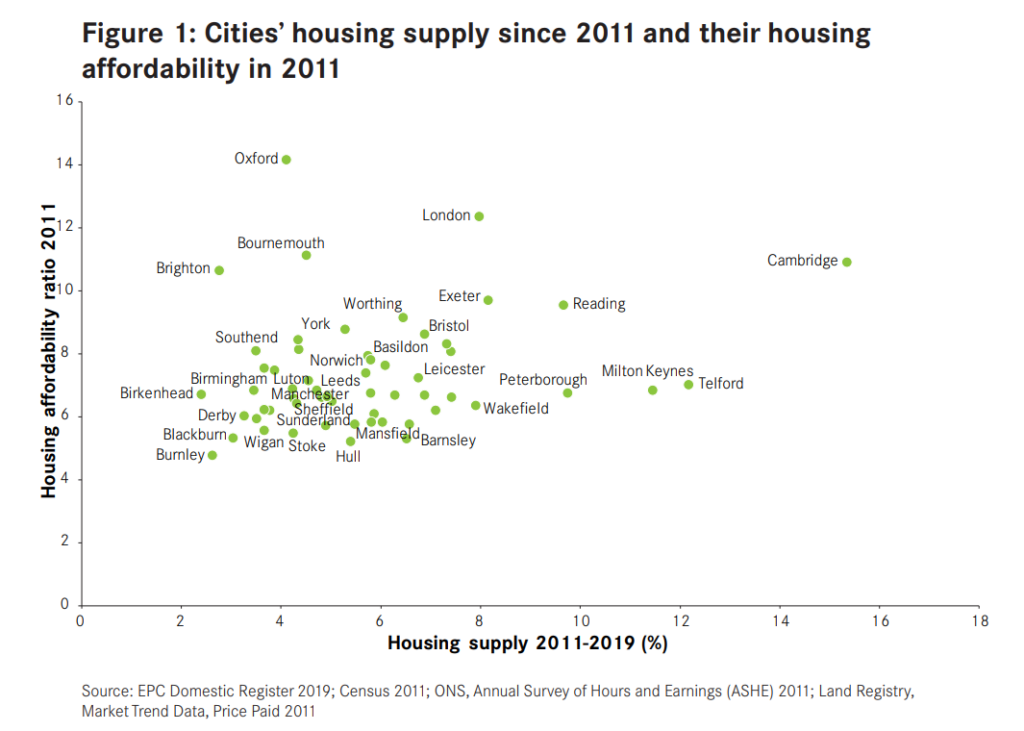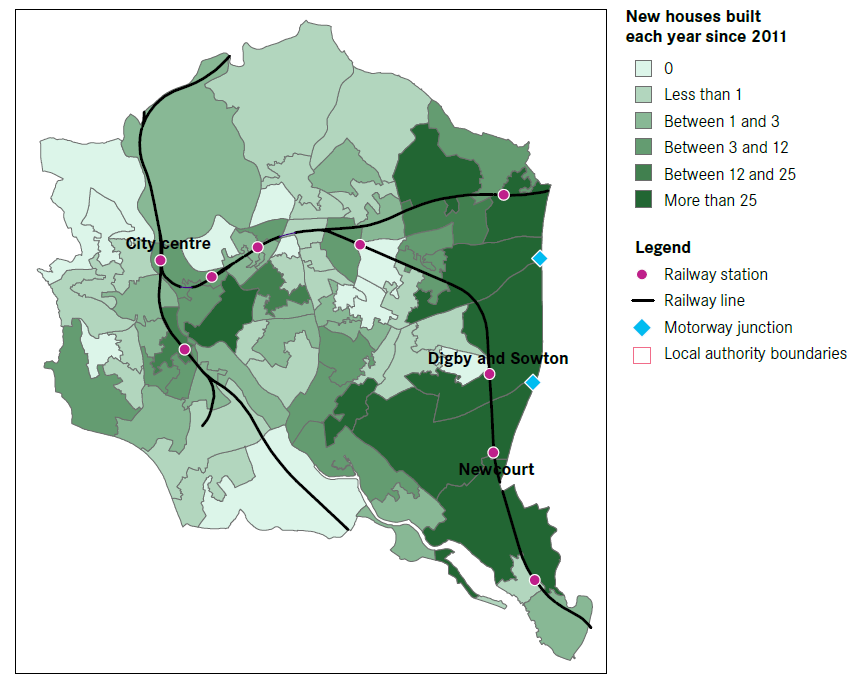Key to Labour’s policy offer is a pledge to build 1.5 million homes during the next parliament. Doing so would be transformative, lowering costs, creating tens of thousands of new jobs, and funding the creation of a new generation of affordable and social houses.
Increasing housebuilding is easier said than done. Despite a similar target of 300,000 homes a year, the current government is well short of this. Only 232,800 homes were delivered last year, and a downturn is expected as the country’s economic situation worsens.
Reforming the planning system will be a key plank of achieving this goal, after being identified as the most substantial barrier to delivering new homes in a survey by the Federation of Master Builders. This will not be easy, however, given how complicated the planning system is.
The problems with the planning system go well beyond the obstacles it presents to building new homes, and it rarely incentivises building high-quality dwellings well-resourced by local infrastructure and amenities. But, in order to achieve its goal of 1.5 million homes, a future Labour government will need to find priority areas to alter in ways which maximise impact while reducing controversy.
Reducing the Burden
The planning system is burdensome for everyone involved. While debate often focuses on the onus on housebuilders, any document filled in by a developer also has to be read by a planning officer, councillors, and locals keen to have an input into developments in their area.
This is in part due to regulations being duplicated, between national and local requirements, and within the same local authority. There will be a degree of overlap, for instance, between a tree survey, arboriculture impact assessment, and biodiversity survey. But some councils ask developers for all three.
This can also be due to regulation being in the planning system inappropriately, regardless of how noble its intensions are. For instance, it is currently impossible to build homes in areas with particularly high nutrient pollution – even though new housing contributes to less than 1% of said pollution.
A root and branch review of the planning system, ensuring that regulations are not duplicated are in the right place, would reduce the burden for everybody involved in planning and speed up the pipeline of new homes.
Standardising Requirements
Similarly, the complexity of the planning map is an obstacle to building new homes. England contains 391 local planning authorities, ranging from Rutland and its 41,381 residents to Birmingham, the largest local authority in Europe.
Each of these areas will then have subtle differences in regulations required. These can be seen in the ‘planning validation checklist’, a list of planning documents local planning that authorities are required to publish. Research conducted by the Housing Forum has shown that many authorities lack an up-to-date checklist, and of those that did, the number of documents required to build as few as 10 homes could range from 24 to 42.
Simplifying and standardising requirements between local authorities, and even considering more radical steps like transferring planning powers to county or combined authorities, would reduce local variation, without reducing the quality of regulation.
Supporting Planners
Delays in the planning system are in part caused by capacity issues in local authorities. Only one in ten local authorities have fully staffed planning departments, with 70% reporting difficulties recruiting new planners. This is fuelled by pay disparity between public and private sectors, difficult backlogs, and online abuse – as a result a quarter of planners have left the public sector in the last ten years.
It is in part due to this that one in five local authorities still lack an up-to-date local plan.
Reversing this decline in the public sector would speed up the delivery of planning applications, improve the institutional expertise within the planning system, and help local authorities and developers to work together more effectively to deliver locally appropriate schemes.
Repositioning Democratic Input
Much as excessive paperwork makes navigating the planning system difficult for everyone involved, so too does the nature of democratic input frustrate both those seeking to build new homes, and residents looking to have an impact on their local community.
Currently, locals get most involved in commenting on individual planning applications, which will already have been drawn up in partnership with a developer and a local authority. The fact that 90 percent of planning applications in the UK are approved points to the fact that most of these are a finalised and detailed product. Thus local input is often perfunctory and ineffective, and many can feel that they have little voice in the process.
Similarly, developers often express concern that plans can either be delayed or cancelled outright by a particularly vocal local campaign, and councillors can often feel pressured by a vocal minority of residents who often little as small as 1 – 3 percent of a local population
Meanwhile, as Labour’s Planning Commission (2019) notes, engaging at an earlier stage, when councils draw up their local plans, “often made plan making unapproachable and sometimes intimidating for residents”. After all, residents are seldom planners, architects, or contractors: but they contain valuable knowledge about their local area which should be put to use in constructing local plans.
Simplifying democratic input at the local plan making stage would make it easier for local people to get involved, for councils to focus attention to a single event, while empowering a greater range of voices.
This is similar to the calls for a ‘zoning’ system, promoted by organisations such as the Centre for Cities. This would bring the UK in line with comparable democracies, by removing the discretionary nature of the planning system, where planning committees decide on individual applications. Instead land would be designated for a certain use, such as ‘housing’, ‘industry’, or ‘commercial use’, and a set of regulations then applied. Developments which followed these regulations would then be automatically approved.
Countries like New Zealand, and individual cities like Austin in the US changed their planning systems from discretionary ones to zoning systems, and both saw an increase in housebuilding and a comparative decrease in house prices.
While moving to such a system would require intensive legislation, moving community input upstream in the planning system could be a suitable stepping stone to simplify the democratic process while broadening it out to a wider audience.
Reforming the planning system is far from an easy process, and successive governments have promised it and failed to deliver. But identifying achievable and high impact goals will be crucial for a future Labour government to speed up the delivery of homes and meet its 1.5 million home goal.
This is the first part of a 4-part series in what a Labour government can do to meet its 1.5 million homes goal. Stay tuned for future instalments!
Alex Toal is Communications Executive at The Housing Forum, a cross-sector housing membership organisation representing local authorities, housing associations, contractors and a range of other housing sector organisations. Before joining THF, Alex worked at the Institute for Government and Make Votes Matter, and is a ward organiser for Cities of London and Westminster PPC Rachel Blake. Based in Haringey, Alex helps to run his local LGBTQ+ tennis group and volunteers at his local food bank.




